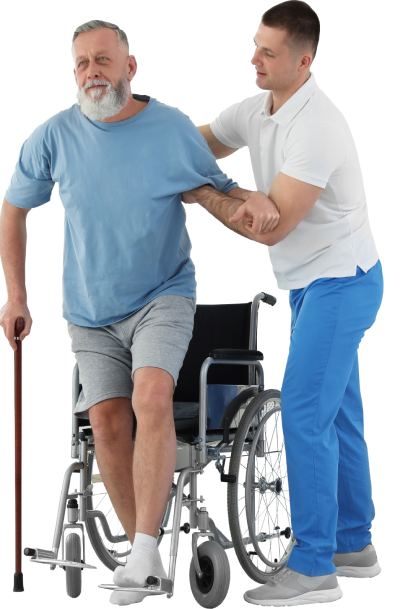It is time for the IHSAA state football semifinals.
There is one team from the Ames area that advanced to the Iowa high school football semifinals. Nevada, ranked No. 7 in Class 3A to end the regular season, stunned No. 1 Clear Lake in the quarterfinals with a 24-14 victory over the Lions at Clear Lake.
The Cubs are headed to the UNI-Dome for the first time in program history, where they will take on traditional power Solon. Solon is 11-0 and ranked No. 2 in 3A.
The Cubs and Spartans are set to kick off at 7 p.m. on Nov. 15 at the UNI-Dome in Cedar Falls.
Here is the Ames Tribune's pick for the playoff game between the Cubs and Spartans.
Check out the all new PLAY hub with puzzles, games and more!
Class 3A No. 7 Nevada versus No. 2 Solon
Nevada (9-2); Solon (11-0): Nevada is coming off the biggest win in program history with its victory at Clear Lake.
The Cubs knocked off a Clear Lake team that had defeated them by a 21-14 score at Nevada during the regular season, and that had also entered the quarterfinals having posted four consecutive shutouts, including a 28-0 win over a top-five West Delaware team and a 41-0 playoff win over Mount Vernon.
Nevada took down an elite Clear Lake team thanks in large part to a veteran defense that returned 10 starters from a year ago. The Cubs held the Lions to 282 yards and a season-low 14 points.
How a dominant defensive front could take the Nevada football program to the next level
Senior linebacker Austin Waldera has 56 tackles, 15 tackles for loss, 3.5 sacks, one interception and a fumble recovery returned for a touchdown to lead the Nevada defense. Defensive ends Cedar Smith and John Nelson have combined for 24.5 tackles for loss and 11 sacks, defensive tackle Jaycee Rangel-Bello has 10 tackles for loss and three sacks and safety Isaac Williams 52.5 tackles.
Defensive backs Lucas Brown and Clay Franzen have combined for 11 of Nevada's 3A-leading 18 interceptions.
Nevada has shown steady improvement on offense all season with the growth of the offensive line, led by veteran tackle Isaac Harrington, and first-year quarterback Drake Hinson.
Hinson has thrown for 1,607 yards and a school-record 25 touchdowns with nine interceptions. He also has 364 yards and four scores on the ground.
Hinson's top receiving target is Gavin Egeland, who has 42 catches for 696 yards and seven touchdowns. Brown has 20 grabs for 395 yards and seven scores and Nelson 22 catches for 333 yards and nine touchdowns.
Waldera is Nevada's leading rusher with 991 yards and six touchdowns.
Egeland gives Nevada a quality kicker, and Waldera is a steady punter for the Cubs. Egeland has made 30 of 31 extra points and all four of his field goal attempts, with a long of 39 yards, while Waldera is averaging 36.9 yards per punt.
Meet Gavin Egeland, the explosive receiver looking to lead Nevada back to the playoffs
Nevada will have its hands full with a Solon team that has been seriously threatened only once all season. Solon's only win by less than 15 points came in Week 4 when the Spartans won at Benton by a 28-21 score.
In the playoffs Solon defeated Benton for a second time, this time cruising to a 31-6 win, and then the Spartans took down Winterset in the quarterfinals by a 21-6 margin.
Solon enters the state semifinals tied with Clear Lake for the most offensive touchdowns in 3A at 55. The Spartans also are tied with Nevada for the most interceptions with 18, and they have the most fumble recoveries at 15, giving them an impressive 33 forced turnovers on the season.
On offense, Solon has one of the best passing games in 3A.
Spartan quarterback Eli Kampman has completed 62% of his passes for 2,104 yards and 28 touchdowns with nine interceptions. He has some dynamic receivers to throw to in back Maddox Kelley (45 catches for 674 yards and 14 touchdowns), receiver Kaden Hoeper (39 for 657 and nine) and receiver Cody Milliman (32 for 463 and three).
Sophomore Owen Bock is a big deep threat for Solon with 11 catches for 254 yards and two scores.
Solon is also effective at running the ball.
Kampman is also a threat with his legs, entering the game with a team-high 491 yards rushing and five scores on the ground. Kelly has rushed for 365 yards and 12 scores, and eight other players have one touchdown rushing for the Spartans.
Solon relies on defense to top Benton in Class 3A Iowa high school football playoffs
On defense, senior linebacker Kyler Jensen is a one-man wrecking crew for Solon with 65 tackles and 10 tackles for loss. The Spartans have four linemen with more than 10 tackles for loss in James Thomsen (12.5 tackles for loss and 5.5 sacks) Lucas Feuerbach (12 tackles for loss and four sacks), Simon Einwalter (11 tackles for loss and two sacks) and Colby Meyers (10.5 tackles for loss and six sacks).
Thomsen has also recovered three fumbles, and Milliman, Feuerbach, Connor Dunn and Ethan Ulch have two recoveries apiece.
Kelley leads Solon's disruptive secondary with five interceptions, including two returned for touchdowns. Ulch has three picks and Tripp Johnson and Kampman two apiece, with Kampman returning one for a touchdown.
Solon's special teams have been elite all season.
Kicker Ryan Locke has made 47 of 48 extra points and 5 of 10 field goals with a long of 42 yards, and punter Collin McKie is averaging 42.4 yards per punt. Kelley has returned one punt for a touchdown, and the Spartans have blocked four kicks on the season.
This game will come down to how well Nevada's secondary holds up against Solon's explosive passing game, how well the Cub offense can control the clock on offense and if Nevada can hold its own on special teams. It will be tough for Nevada to pull off wins over two top-two teams in a row, but the Cubs are peaking at the right time. Nevada 27, Solon 24
Joe Randleman covers high school sports for the Ames Tribune. Contact him at. Follow him on Twitter at

 877-292-2126
877-292-2126




 Service Areas
Service Areas























